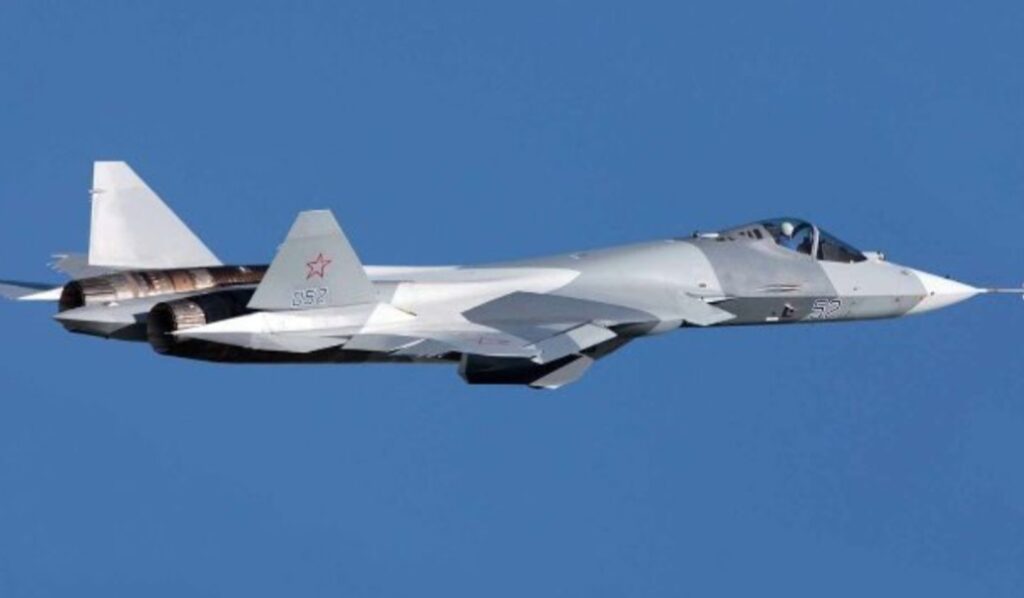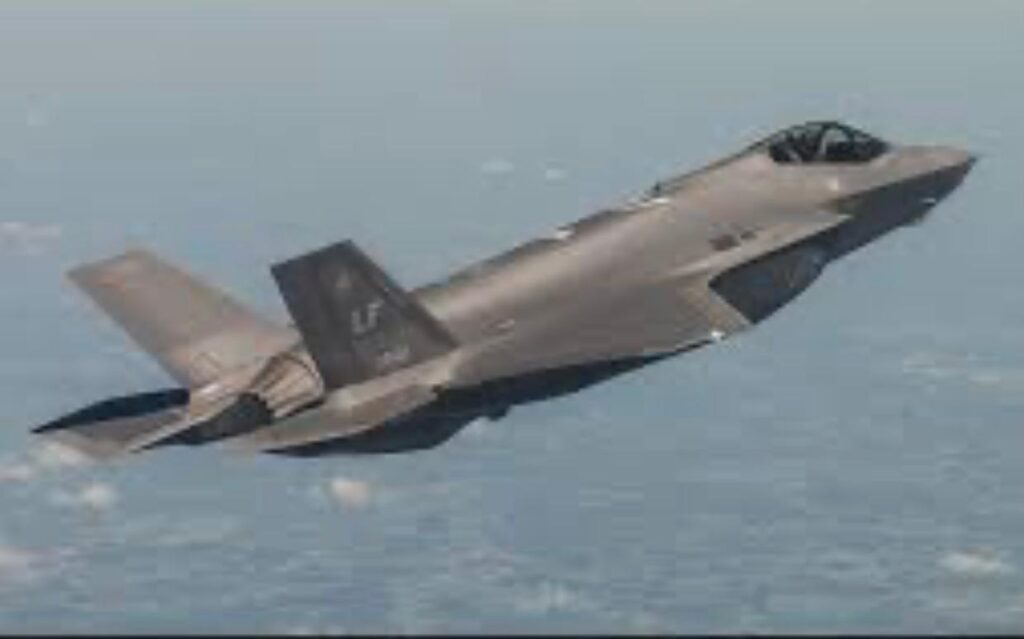By: Suman Sharma

Expected to be the showstopper at this year’s Aero India, after the US Air Force (USAF)’s F-35 Lightening II’s India debut in 2023, Russia is all set to launch its fifth-generation fighter, the Su-57 Felon, developed by Russian aircraft manufacturer Sukhoi in India at the upcoming 15th edition of the biennial airshow-Aero India, from Feb 10-14, 2025 at Yelahanka, Bengaluru. India is the second country for the Felon to debut in after China, where it flew for the first time at the Chinese airshow in Zhuhai last November.
Though the USAF F-35 Lightning II will be on static display, unlike the Felon, the clear signalling is not lost on the strategic community about America’s last-minute decision to send its stealth fifth generation fighter, which enthralled viewers during Aero India-2023, through its aerial display and awe-inspiring manoeuvres.
Both US President Donald J Trump and Russian President Vladimir Putin are reported to visit India this year and the Indian Air Force (IAF) has had a long pending RFP (request for proposal) for its 114 MRFA (multi-role fighter aircraft) deal valued at US$ 20 billion, still to be announced. The F-35 Lightening’s return to the airshow this year is also timed with Indian Prime Minister Narendra Modi’s US visit, after a few days.
It maybe noted that India had initially agreed to co-develop its own fifth generation stealth fighter jet along with Russia, under a 2007 project named PAKFA-FGFA, which got derailed in 2018, but the Russian side maintains that the PAKFA-FGFA is only delayed and might get revived soon.
Fifth Generation Fighters
Fifth-generation fighter jets boast advanced capabilities, including stealth, super-cruise, and super-manoeuvrability. They also offer superior precision strike capability, speed, agility, and situational awareness. While the Su-57 is a twin-engine aircraft, the F-35 is a single-engine fighter. Stealth is the main feature of a fifth-generation fighter, which is a technology enabling radar evading feature to reduce detection. Advanced avionics in a fifth generation comprise an integrated sensor fusion for superior situational awareness. Their super-cruise capability ensures a sustained supersonic flight without afterburners. The fifth-generation fighters are capable of network-centric warfare, meaning they have seamless data sharing with other assets in a real-time multirole environment. They excel in air-to-air, air-to-ground and electronic warfare missions.
India is also working on developing its own fifth-generation fighter, the Advanced Medium Combat Aircraft (AMCA). The Cabinet Committee on Security (CCS) gave its approval to the Defence Research and Development Organisation (DRDO) for the project in 2023, while the financial sanction came only in 2024. The first prototype is expected to have its debut flight by 2028, according to DRDO sources.
It may be noted that India’s fighter fleet has declined to 29.5 squadrons, well below the sanctioned strength of 42.
The only fifth generation stealth fighters in the world, which are operational are the American F-22 Raptor, the F-35 Lightening II, both developed by Lockheed Martin and in service in the USAF, the Russian Su-57 Felon, which has been part of operations in Syria and Ukraine and the Chinese Chengdu J-20 ‘Mighty Dragon’.
While those under development are Russian Su-75 ‘Çheckmate’, Shenyang FC-31 ‘Gyrfalcon’, the Chinese twin-engine, multi-role fifth generation stealth fighter, India’s AMCA, Tai TF Kaan, the twin-engine, multi-role fifth generation fighter being developed by the Turkish Aerospace Industries, Mitshubishi F-X-the sixth-generation stealth fighter being developed for the Japan Air Self-Defence Force, and the Korean KAI KF-21 Boramae programme.
F-35
The single-engine, single-seat F-35 is essentially being sold to the United States’ NATO allies, although non-NATO allies Israel, Japan, South Korea, and Singapore also operate it, while Switzerland, which is also non-NATO, is considering an F-35 purchase. Manufactured by Lockheed Martin, the fifth-generation fighter is co-developed in partnership by eight countries and presently flown by 14 air forces and navies worldwide.

F-35’s debut in India at the 2023 edition of Aero India, according to the US Embassy was not about Foreign Military Sales; but more about the closeness of a defence partnership of two maritime democracies with great air power, naval power and land power collaborating to provide deterrence and security across the region.
The F-35’s superior stealth design comes with internal weapons bays, radar-absorbent materials, and advanced electronic warfare (EW) capabilities. The Lightening II is reportedly less manoeuvrable, with no thrust-vectoring, but still agile due to its advanced flight control systems. The F-35’s AN/APG-81 AESA radar is one of the most advanced in the world, with superior target tracking and electronic warfare capabilities. The fighter has a longer operational range of 1,700 plus kilometres due to its efficient fuel management. The weapons package comprises AIM-120 AMRAAM, AIM-9X Sidewinder, and precision-guided bombs, all designed for stealth carriage. The F-35 is a multi-role stealth fighter focused on strike missions, intelligence gathering, and electronic warfare.
Su-57 Felon
The Su-57 is a twin-engine stealth fighter aircraft, presently operational in just the Russian Airforce. The two engines are typically identified as Saturn AL-41F1 afterburning turbofan engines. It is a more air-superiority-focused fighter with ground-attack capabilities.
The Felon is highly manoeuvrable with 3D thrust-vectoring engines, making it superior in close-range dogfights. The jet is faster at Mach 2+ and has a combat range of ~1,500 km (without refuelling). The Su-57 uses a mix of beyond-visual-range missiles like the R-77M and R-37M, which has very long-range capabilities. The N036 Belka AESA radar has multiple arrays, providing good situational awareness.
AMCA
The Advanced Medium Combat Aircraft (AMCA) is India’s upcoming fifth-generation stealth fighter being developed by HAL (Hindustan Aeronautics Limited) and DRDO. It aims to rival other fifth-gen fighters like the F-35, Su-57, and J-20 while incorporating cutting-edge technologies. The fighter is expected to roll out for trials by 2028.
This fifth-generation, twin-engine, multirole, low-observable fighter is due to have a maximum take- off weight in the 25-tonne category, and includes a number of fifth-generation features including Diverterless Super-sonic Inlets (DSIs), serpentine intakes an internal weapons bay, and thrust vectoring engines. At present, the AMCA still in the design phase.
The Diamond-shaped AMCA has a blended wing-body structure for reduced radar signature. It is supposed to be incorporated with a low radar cross-section (RCS) with stealth shaping and radar-absorbent materials (RAM). It is expected to achieve Mach 2+ speed. The twin-engine configuration is for a high thrust-to-weight ratio and enhanced combat range of 1,500 km+ (extendable with aerial refuelling). The AMCA will be equipped with AI-powered avionics for automation and reduced pilot workload. The weapons package would comprise Beyond Visual Range (BVR) missiles: Astra Mk-2, Astra Mk-3, Astra Mk-1, Python-5, precision-guided munitions, like smart bombs and air-to-ground missiles. AMCA will be India’s first stealth fighter, designed to balance stealth, manoeuvrability, and sensor fusion.
This year’s event will also showcase Boeing’s KC-135 Stratotanker refuelling aircraft and Embraer’s C-390 transport aircraft, along with other exciting highlights.

